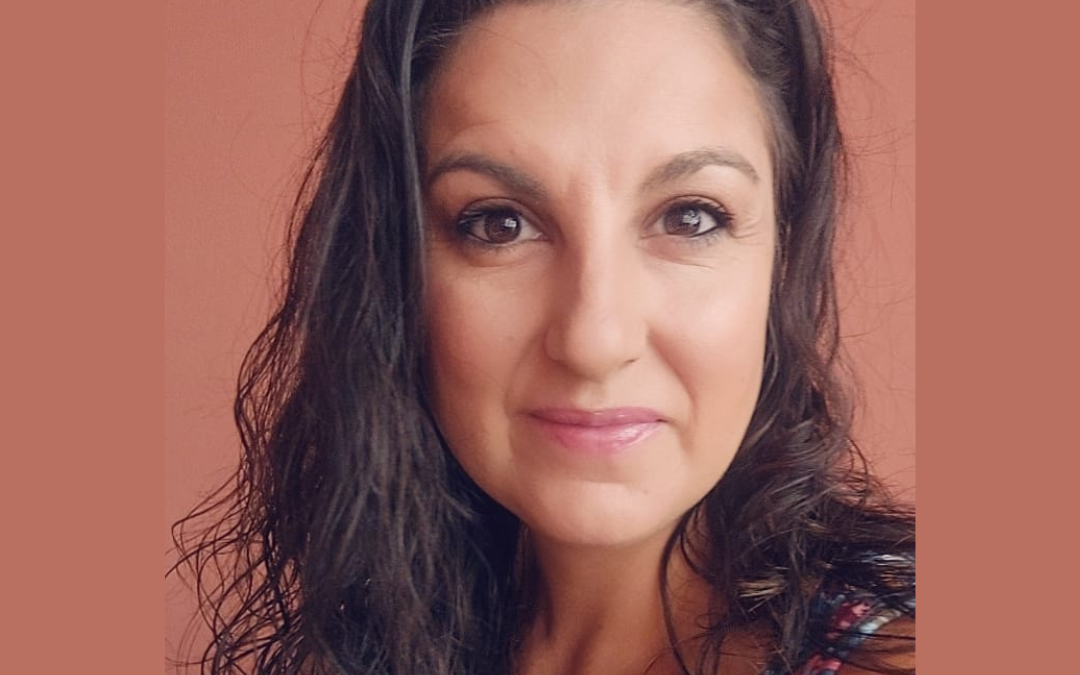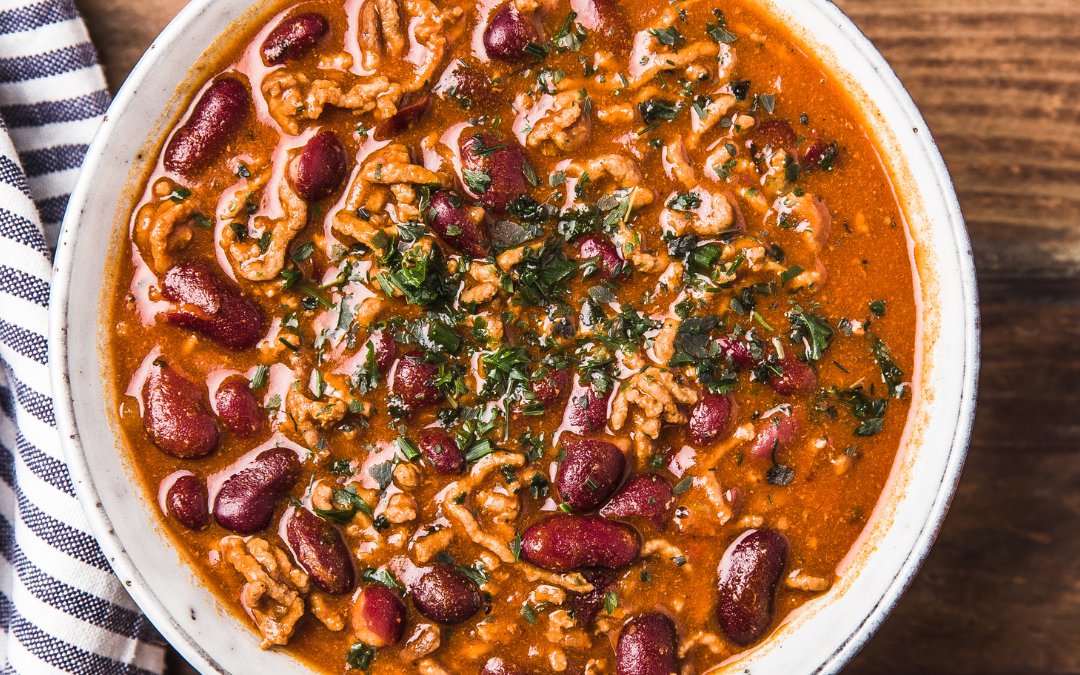


Black-Eyed Peas and Quinoa Salad
Savor this vibrant and nutritious dish, packed with flavor, texture, and essential nutrients, whether as a main course or a side salad.
Ingredients
3 cups chopped kale (1 small bunch)
1 can (15 ounce) black-eyed peas, drained and rinsed
2 cups cooked quinoa
1 small red onion, chopped
1 bell pepper, diced (any color)
3 Tablespoons white distilled vinegar
2 Tablespoons vegetable oil (try olive oil)
1 teaspoon paprika
½ teaspoon black pepper
¾ teaspoon salt
Directions
- Wash hands with soap and water.
- Rinse fresh vegetables under running water before preparing.
- In a large bowl, combine the kale, black-eyed peas, quinoa, onion and bell pepper.
- In a small bowl or jar with a lid, combine the vinegar, oil, paprika, black pepper and salt. Stir or shake until combined.
- Pour mixture over vegetables and quinoa. Stir to combine and chill before serving.
- Refrigerate leftovers within 2 hours.
Notes
- Try other vegetables for the bell pepper such as chopped zucchini, hot pepper or tomato.
- For kale that’s easier to chew, chop pieces small then place in the bowl with a teaspoon each of oil and vinegar and a pinch of salt. Massage until soft with your hands, then continue with step 3.
- Try other cooked grains such as bulgur or wheat berries.
- For perfectly cooked quinoa, try the Food Hero Stovetop Quinoa recipe.
- Cook your own black-eyed peas from dry. 1 cup dry makes about 3 cups cooked. 1 can of black-eyed peas contains 1 ½ to 2 cups drained and rinsed black-eyed peas.
Resource: Recipe from Foodhero.org

The Rise, Fall, and Rebirth of Menopause Treatment
With the introduction of hormone therapy in the 1960s, women flocked to their doctors to treat their menopause symptoms. The therapy was groundbreaking and provided relief for millions of women. The treatment grew in popularity until the early 2000s. The use of hormones abruptly dropped after a women’s health study raised serious concerns over risks. With few other options available, the fallout from the study left an entire generation of healthcare providers struggling to treat women in their menopausal years. This gaping hole in women’s health is now getting addressed with more education, research, and a look back at that sentinel study that stopped it all.
What is menopause
Natural menopause occurs when a woman or person identified as female at birth has gone 12 months without any period. This defines the end of not just menstruation but also the end of fertility, as the ovaries are no longer functioning as effectively. This decreased function results in less hormone production, primarily the estrogen hormone. An estimated 1.3 million women enter menopause each year, with approximately one-third of their lives spent in menopause. The average age for natural menopause is 51 years. But symptoms may begin up to 10 years before menopause in what is known as perimenopause or the menopause transition.
Surgical menopause involves removing both ovaries with a surgery known as an oophorectomy. The removal of ovaries relates to medical issues, which can occur at any age. The missing ovaries will trigger menopause symptoms due to the lack of hormones they typically produce.
Common Menopause Symptoms
| Hot flashes are the sudden sensation of warmth in the face, neck, or chest with or without sweating | Night sweats are hot flashes with sweating that occur at night |
| Difficulty sleeping, which may cause daytime fatigue and irritability | Thinning of bones (osteoporosis), which may cause bones to break more easily |
| The vaginal skin may become thin or dry, causing irritation and painful sex | Urinary issues such as recurring urinary tract infections (UTIs) and incontinence |
| Mood changes, such as depression or irritability | Anxiety |
| Joint pain, aches, or stiffness | Hair loss or thinning |
| Memory or concentration problems, commonly called “brain fog” | Heart palpitations where your heart beats suddenly become more noticeable |
| Decreased interest in sex | Tinnitus, a constant ringing in the ears |
| Weight gain | Increased facial hair |
Types of hormone therapy
Hormone therapy is the use of prescription medications to boost hormone levels in the body. For the treatment of menopause, this therapy replaces the declining estrogen and progesterone. For menopause, this therapy comes in two types.
Systemic therapy. Estrogen and progestin, or similar compounds, are absorbed into the blood and travel throughout the body to treat symptoms. This method is very effective at treating hot flashes. Systemic therapy comes in the form of:
- Oral pills
- Patches placed on the skin
- Gels or sprays placed on the skin
- Ring inserted into the vagina
Low-dose therapy. Also known as vaginal estrogen therapy, this medicine treats just the vaginal area in the form of topical or vaginal creams. Low doses rebuild and moisturize vaginal tissue. Because of the small doses of this therapy, there are fewer risks as only a minimal amount enters the bloodstream.
Concerns about hormones for the treatment of menopause
In 1991, the Women’s Health Initiative (WHI) began a long-term study on women’s health. The study focused on cardiovascular disease, cancer, and osteoporosis-related fractures. In 1998, the study looked at hormone therapy use with both estrogen and the combination of estrogen and progestin. By 2004, researchers had stopped both studies early after finding increased risks of heart disease, stroke, pulmonary embolism, and breast cancer. The halting of the studies made headlines, leading many women to stop using hormones. Women aged 52-65 had the greatest decline as use dropped 88% in this group.
The impact of the WHI study was profound. Few other treatments were well studied. An entire generation of healthcare providers were left lacking information on treating menopause, and women felt this. A survey in 2021 found that 73% of women ages 40-65 were not getting care for their menopause symptoms. An additional 65% said they would not consider hormone therapy.
The benefits of treating symptoms
About 70-80% of women have menopause symptoms negatively affecting their quality of life. Hot flashes are the most reported symptom and can last more than a decade. However, up to 40% of individuals will continue to have symptoms into their 60s, and up to 15% will have hot flashes into their 70s. Hot flashes affect not only physical comfort but also sleep and mood.
The tide is changing with menopause treatments. Since the WHI study, research has shown hormone therapy is safer in younger women. Starting MHT within 10 years of the onset of menopause or before age 60 poses less risk. Hormone therapy is the most effective method of treating vasomotor symptoms like hot flashes. About 80% of women get relief from symptoms within two weeks of starting hormone therapy. There are still risks, and each individual should discuss their personal risk with their healthcare provider. Risks associated with hormone therapy:
- Stroke
- Uterine cancer
- Blood blots
- Breast cancer
For many, the benefits of hormone therapy outweigh the risks.
- Reduced menopause symptoms
- Relief of vaginal discomfort and dryness
- Improved bone health
- Ease symptoms of overactive bladder
- Lower risk of cardiovascular disease
- Reduced risk of developing type 2 diabetes
But hormones aren’t the only treatments. More research backed non-hormonal options are available to treat a variety of symptoms.
When to see a healthcare provider
Menopause treatment is in the spotlight with organizations nationwide. Locally, Oregon Health and Sciences University (OHSU) began offering training on menopause care. The classes are offered statewide to primary care providers and community health partners. With this program, OHSU focuses on reaching healthcare providers located in rural areas, including Tillamook County.
The impact of menopause symptoms cannot be understated. They are disruptive for many women daily, affecting how they feel, work, and relate to others. Perimenopause and menopause symptoms last for a decade or more, yet 1 in 8 adults still avoid talking about menopause. If you have perimenopause or menopause symptoms, talk with your healthcare provider. You can discuss:
- Whether you have reached menopause
- The symptoms you have and how much they affect you
- Your health risks based on your age and general health
- Whether hormone therapy is a good option for you
- Alternative treatment options to hormone therapy
If you need assistance in finding a provider to treat your menopause symptoms, check The Menopause Society’s website for a link to menopause specialists. If you are in the Columbia Pacific CCO, look at their Find a Provider page.
Written by: Leanna Coy, FNP-BC, Freelance Health Writer
References:
Menopause definitions. (2024). The Menopause Society. Retrieved December 2, 2024. https://menopause.org/patient-education/menopause-glossary
Menopause. (2024). Society for Women’s Health Research. Retrieved December 2, 2024. https://swhr.org/health_focus_area/menopause/
Walsh, J. (January 10, 2024). How gaps in research lead to gaps in care for aging women. Harvard Medical School News & Research. https://hms.harvard.edu/news/how-gaps-scientific-data-lead-gaps-care-aging-women#:~:text=Ambrosio%3A%20Menopause%20is%20inextricably%20intertwined,third%20of%20their%20lives%20postmenopausal.
Signs and symptoms of menopause. (March 14, 2023). NHS. https://www.nhsinform.scot/healthy-living/womens-health/later-years-around-50-years-and-over/menopause-and-post-menopause-health/signs-and-symptoms-of-menopause/
Hormone Therapy. (2024). The Menopause Society. Retrieved December 2, 2024. https://menopause.org/patient-education/menopause-topics/hormone-therapy#:~:text=What%20Is%20Hormone%20Therapy?,night%20sweats%2C%20and%20sleep%20disturbances.
Kohn, G.E., Rodriguez, K.M., Pastuszak, A.W. The history of estrogen therapy. Sex Med Rev. May 27, 2019. PMID: 31147294
About WHI. (2021). The Women’s Health Initiative. Retrieved December 2, 2024. https://www.whi.org/about-whi
Iyer, T.K., Manson, J.E. Recent trends in menopausal hormone therapy use in the U.S. JAMA Network. September 27, 2024. PMID: 39331374
Elflein, J. Treatment of menopause symptoms among older U.S. women as of 2021. Statista. August 5, 2021. https://www.statista.com/statistics/1255552/treatment-of-menopause-symptoms-among-older-us-women/
The Menopause Society. September 4, 2024. Hormone therapy usage rates still low despite proven benefits. https://menopause.org/press-releases/hormone-therapy-usage-rates-still-low-despite-proven-benefits#:~:text=It’s%20estimated%20that%2070%25%20to,continue%20to%20have%20hot%20flashes.
Yang, J. (November 20, 2023). Share of U.S. adults who avoid talking about menstruation or menopause as of 2022. Statista. https://www.statista.com/statistics/1424427/menstruation-and-menopause-taboo-us/
Solving the mysteries of menopause, one conversation at a time. (October 24, 2024). Oregon Health News Blog. https://covidblog.oregon.gov/solving-the-mysteries-of-menopause-one-conversation-at-a-time/?utm_medium=email&utm_source=govdelivery

Turkey Pumpkin Chili
A rich and flavorful chili made with lean ground turkey, hearty beans, and a blend of aromatic spices!
Ingredients
Directions
- Wash hands with soap and water.
- Rinse fresh vegetables under running water before preparing.
- In a large saucepan, heat oil on medium heat.
- Add ground turkey, onion, green pepper and garlic.
- Cook and stir, breaking meat apart until it is brown and vegetables are tender.
- Stir in the beans, pumpkin, tomatoes, broth, water, brown sugar and taco seasoning.
- Bring to a boil. Reduce heat, then cover and simmer for 1 hour.
- Refrigerate leftovers within 2 hours.
Notes
- Broth can be made at home, purchased in a can or box, or made using bouillon. For each cup of broth use 1 cup very hot water and 1 teaspoon or 1 cube of bouillon.
- Use leftover turkey cut in bite-size pieces instead of ground turkey. Sauté the vegetables, then add the turkey with the other ingredients.
- No Taco Seasoning? Mix together 1 Tablespoon chili powder and 1 teaspoon each cumin and oregano. Add some red pepper flakes if you like it spicier.
- This recipe can be made in a 5-quart or larger slow cooker for extra convenience. Put cooked ground turkey mixture and all other ingredients into the cooker, cover and cook on LOW for 7 to 9 hours or on HIGH for 4 to 5 hours.
Recipe from foodhero.org

Why I’m In! Interview with Community Partner, Sarah Ermer
Written by: Sarah Ermer, MPH, CHES; Prevention Specialist at Tillamook Family Counseling Center
What drew you/your organization to partner with Tillamook County Wellness?
I’m a recent transplant to Tillamook; I moved here at the end of January for my position at TFCC. When I was preparing to move, I was doing some searching online to learn more about health initiatives in the county. I distinctly remember sitting at my parents’ dining room table looking at the Tillamook County Wellness website on my laptop and thinking, “Wow, Tillamook County has a great system for health promotion!” After officially moving and starting at TFCC, I knew I needed to prioritize getting to know as many different people and organizations as I could in order to do my job well. One of the first people I talked to was Michelle Jenck, who is the coordinator for Tillamook County Wellness. My background and current position are well-aligned with Tillamook County Wellness, so she connected me with the Health Promotions committee. The rest is history!
What, if any, changes have you seen come about as a result of this work?
I haven’t been here long enough to say first-hand what larger changes have come about as a result of Tillamook County Wellness, so I’ll share about a moment that stands out to me. One of the first community events I went to was Healthy Kids Day at the YMCA, where the Tillamook County Wellness Access to Physical Activity committee held the Bike Rodeo. I was amazed by the number of bikes and helmets that were available to go home with families! After watching a long line of kids practice bike safety around the parking lot, I have no doubt that even that event alone created positive change.
What have you learned from being involved in this work?
One of my favorite parts of being involved in Tillamook County Wellness, and of Tillamook as a whole, is seeing how the community really does come together to make things happen. I’ve learned a lot about all the systems at play in the area, and the fact that Tillamook County Wellness brings so many of them together is an amazing model for any community that wants to build stronger coalitions. I’ve learned what it really looks like to work as a community!
What are your hopes for this work as it relates to you/your organization?
My work is focused on substance misuse/addiction prevention, and doing that work effectively means looking beyond substance use alone. If we want to prevent young people from drinking or using drugs, we have to be willing to go beyond telling them what NOT to do. It means creating an entire community that supports people who are struggling with their mental health, who need a place to go, or who need positive, healthy activities to help build their confidence. I’ve seen how effective Tillamook County Wellness is in mobilizing people to support health initiatives; I hope that we can continue to mobilize in building support for both physical and mental health access.
What are your hopes for this work as it relates to changing community health in Tillamook County.
Much like my hope as it relates to me/my organization, my hope for our community health is that our collective idea of health and wellness continues to expand. In so many communities, support for different areas of health is siloed. Mental health, physical activity, nutrition, healthcare, social connectedness, financial wellbeing… they all play into our quality of life. I hope that Tillamook County Wellness can continue to be a part of the bridge that connects all these areas of health.
Is there anything else you’d like to share?
Tillamook County has been such a wonderful place to live and work. Thank you to everyone who has been so welcoming! I’m excited to continue to be a part of this community 🙂
For more local health and wellness information, visit www.tillamookcountywellness.org or follow Tillamook County Wellness on Facebook and Instagram.
